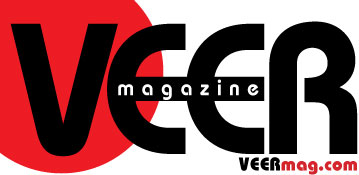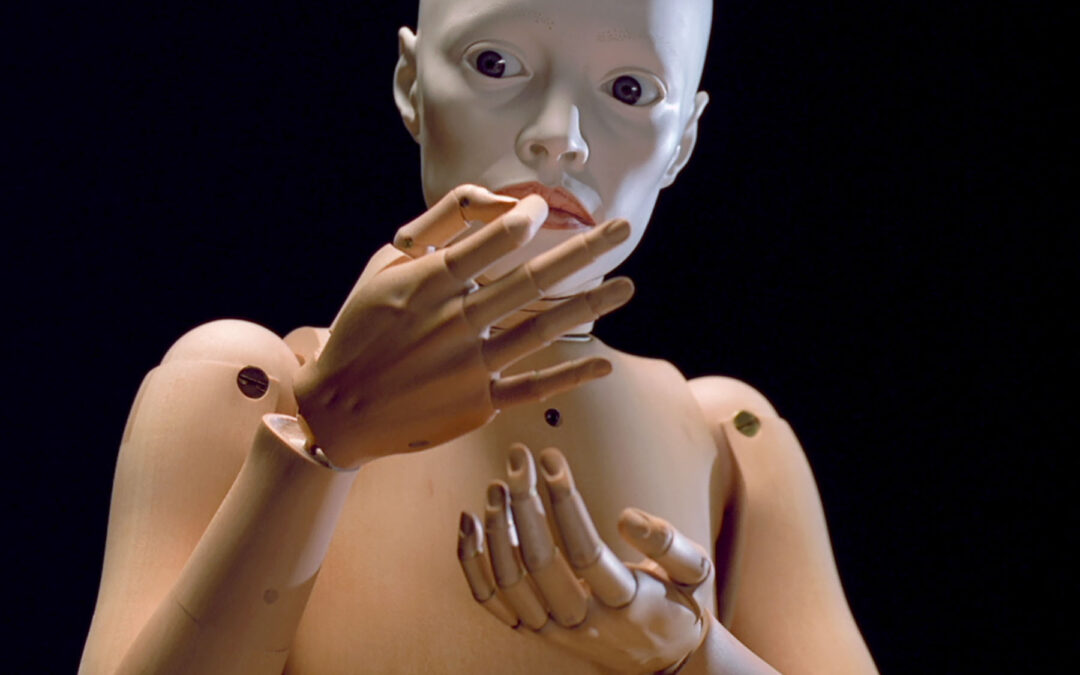(Elizabeth King and Richard Kizu-Blair, What Happened)
By Betsy DiJulio
Springboarding from the Barry Museum’s collection of historical automata, this three-prong exhibition highlights intersections between art, science, and emotion asking, somewhat paradoxically, how robots can better help us understand our own humanity.
Alongside the Museum’s kinetic sculptures, which predate modern robotics, are the multimedia, anatomically-based works of Elizabeth King, the abstract mechanical sculptures of Joseph Morris, and a showcase of ODU robotics projects. Permanent collection + contemporary artists + academic scientists = an integrated and dynamic exploration of automation, autonomy, articulation, and affect.
To learn more about this intriguing exhibition, I reached out to Barry Art Museum Executive Director Charlotte Kasic for the following Q&A.
Betsy DiJulio (BD): First things first, Charlotte: please give us the who, what, and why of this exhibition, including how the Barry’s automata collection came about.
Charlotte Kasic (CK): Our collection of historic dolls and automata was donated by Museum founder Carolyn Barry. Her aunt was an antique doll collector, and the passion was handed down through the generations. The automata were originally designed and fabricated by clockmakers as a form of entertainment and have been likened to early physical computing. Using these first humanoid robot forms as a point of origin, this exhibit is a survey of how this technology has evolved and influenced both contemporary artists and local industry leaders. The overarching goal is to explore the range of emotions these projects produce in the viewer.
BD: I am a longtime fan of Elizabeth King’s work but was not familiar with Joseph Morris’s which I look forward to seeing in person. Why, from among artists working with similar concepts, were these two artists chosen and paired specifically for this show?
CK: Formally, Elizabeth’s work references early mannequins and automata, and her entire creative practice entails deep research and meticulous craftsmanship. She is currently writing a book, in fact, about a sixteenth-century automaton in the form of a monk, housed at the Smithsonian Museum of American History. Joseph Morris’ work, in comparison, is industrial, but it replicates the physicality of breathing or dance through abstract kinetic machines. Although the artists’ projects differ greatly, both elicit specific emotions with their animated sculptures.
BD: Emotion/Motion is guest curated by Sarah Woodbury, a Ph.D. candidate in American Studies at William & Mary. How is this show related to her doctoral work, as well as her other interests, passions, and pursuits?
CK: Sara Woodbury first worked with automata during a curatorial fellowship at Shelburne Museum in Vermont. As a scholar, she is attracted to the eclectic. Her Master’s qualifying paper focused on 17th-century Dutch depictions of tooth-pulling scenes, for instance, while her doctoral work focuses on museum outreach exhibitions and collections mobility. She is a collaborative and elastic thinker who contextualizes robots and automata with the current culture in Hampton Roads. We are delighted to work with her on this show.
BD: A collaboration with ODU’s theater department was central to the previous exhibition, Karen LaMonte: Théâtre de la Mode, and I was excited to see that a selection of robotic projects at ODU form one of the three prongs of this exhibition. Will you tell us more about what that aspect of the show will entail, as well as how you view the value of collaborations with the university?
CK: One emerging theme with our changing exhibitions is to showcase the remarkable talent, innovative research, and less-seen resources on the ODU campus. For this exhibition we are debuting four ODU related projects: NAO Robot research with children affected by autism, David’s Project (the first telehealth robot developed for communication between terminally ill patients), and two military robots produced by ODU faculty and alumni: one that helps train snipers and another used to train police to deescalate tense situations). Although not considered “art” in a traditional sense, these projects elicit a range of emotions in the viewer.
BD: You previously mentioned that this exhibition will coincide with two additional changing exhibitions next fall. Can you share more about that without giving away any surprises?
CK: This show opens in February alongside Hirata Gōyō: The Birth of the Japanese Art Doll. Without giving too much away, I can say that in the fall we will open an exciting contemporary Native American doll exhibition. And building on last year’s success with the Museum of the Moon, we will debut another large scale outdoor arts festival as well.
BD: What else would you like for VEER readers to know about this encompassing exhibition and attendant programming?
CK: There are many complex themes to explore in this exhibition, and we invite museum guests to dive in with us! The Museum’s virtual lecture series, monthly After-Hours program, Saturday weekly tours, and our additional resources in the museum (including our hands-on robots for kids of all ages), and online offer a variety of free and accessible ways to experience the exhibition. See the full schedule at barryartmuseum.odu.edu/learn
WANT TO SEE?
Motion/Emotion: Exploring Affect From Automata To Robots
February 10 through December 31
Barry Art Museum @ ODU




